These pictures of Martin Luther King showcase his life, legacy and impact as a civil rights leader
25 Pictures of Martin Luther King Jr.’s Life and Legacy
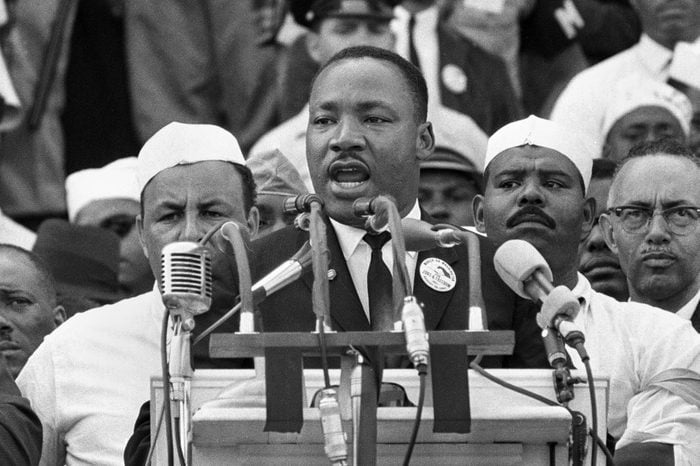
Historic pictures of Martin Luther King Jr.
Dr. Martin Luther King Jr. led the Civil Rights Movement in the United States from the mid-1950s until his death by assassination at age 39, in 1968. Though his life was short, his impact will always be with us. In fact, if you google “pictures of Martin Luther King” you’ll quickly learn, along with other MLK facts, that the larger-than-life civil rights activist and icon never shied away from the spotlight, especially when it was for a good cause.
Throughout King’s adult life he led movements, helped enact laws, motivated generations with his powerful words and forever changed our nation as we know it. In tribute to his life and lasting impact (along with Martin Luther King Jr. Day on Jan. 15), we share Martin Luther King pictures that capture King’s indelible legacy. You’ll find MLK pictures that feature his family, friends and fellow civil rights activists—like Coretta Scott King and Malcolm K—while others offer a more direct look at his success and struggles combating racism (we even share an image of his last appearance in Memphis, Tennessee).
Get Reader’s Digest’s Read Up newsletter for more history, knowledge, fun facts, humor, cleaning, travel and tech all week long.
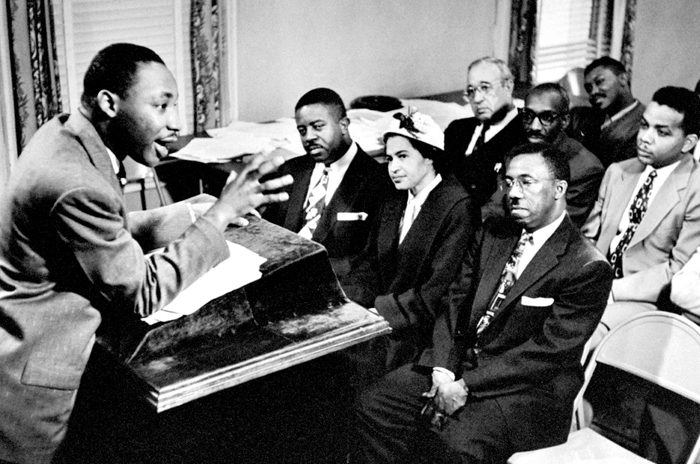
A plan for change
Before the 1956 Montgomery Bus Boycott in Alabama, intended to protest segregation on public transportation, King held a meeting on Jan. 27, 1956, to plan the boycott’s strategy with his advisors and organizers. Rosa Parks, also known as “the mother of the Civil Rights Movement,” sits in the front row.
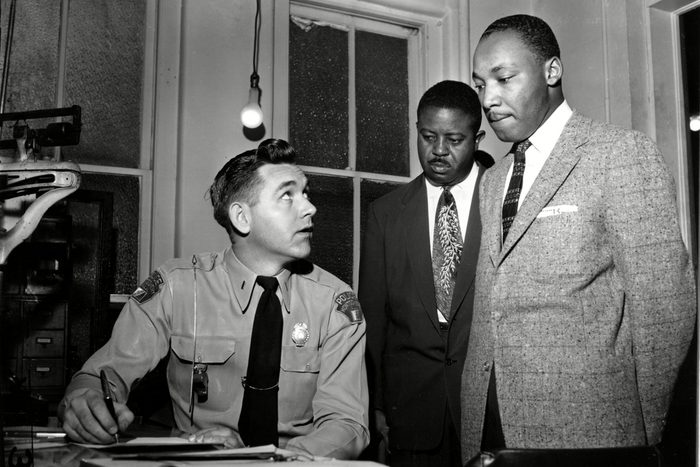
Under arrest
During the 1956 Montgomery Bus Boycott, King and several other local civil rights leaders who helped organize the protest were arrested. King spent months in jail during the boycott, which lasted nearly a year, until the Supreme Court ruled that segregation on buses is unconstitutional.
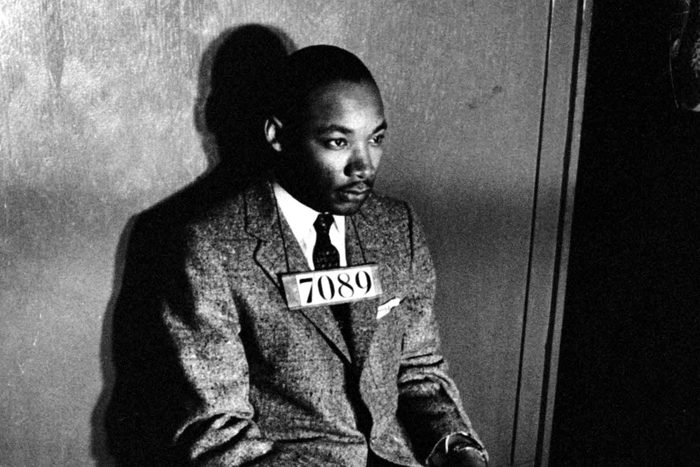
Mug shot
In this picture of Martin Luther King Jr., he sits for his mug shot after being booked into the Montgomery jail as a result of leading the Montgomery Bus Boycott— a life-changing moment in American history. Today, after nearly seven decades, Alabama officials say they are considering wiping the records clean for Rosa Parks and King for their noble acts.
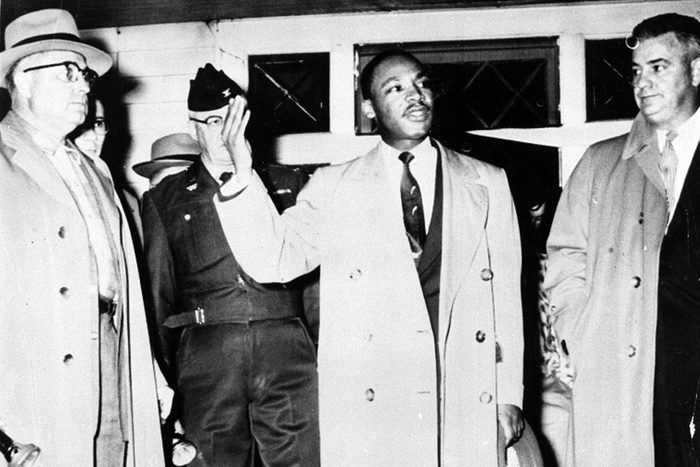
His home bombed, King urges nonviolence
During the Montgomery Bus Boycott, a white supremacist terrorist planted a bomb on the patio of Dr. Martin Luther King Jr.’s home that was strong enough to blow out the house’s windows. The family was home at the time, and although they were shaken up by the blast, they were not harmed. Here he’s addressing a crowd from his front porch after the bombing, urging them not to resort to violence and to remain calm as they peacefully resisted segregation.
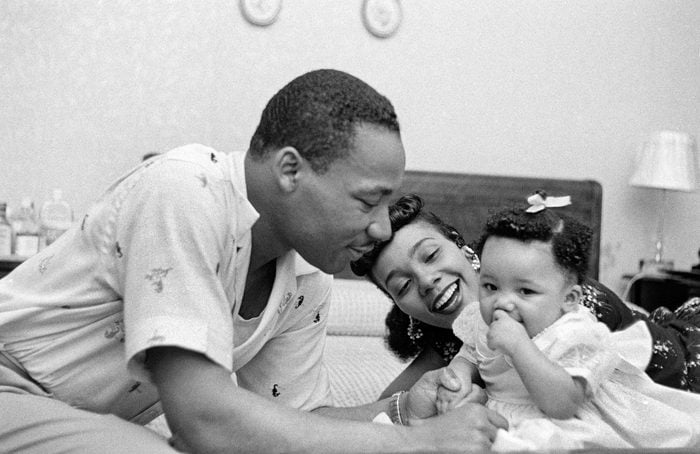
Daddy dearest
When he wasn’t freedom-fighting across America, MLK was a doting father of four. In this picture of Martin Luther King Jr., he’s shown spending quality time with his daughter Yolanda and wife, Coretta Scott King, at the couple’s family home in Montgomery, Alabama, in May 1956.
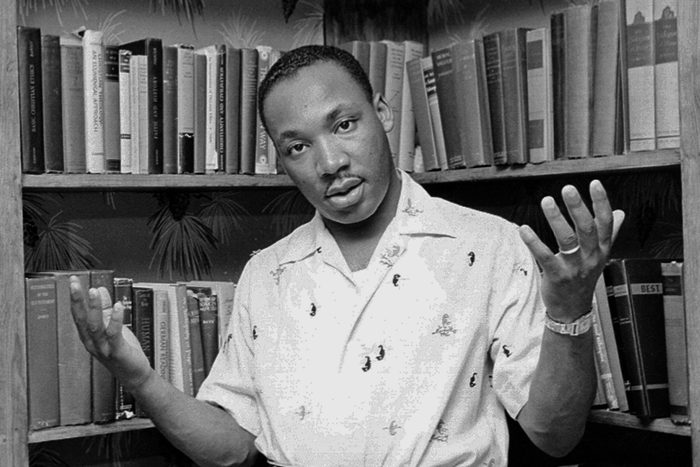
King and his Bible
Here is King posed at home in front of his library. One book he couldn’t live without? His Bible, which reportedly traveled with him wherever he went. Another fun Martin Luther King Jr. fact? When President Obama was sworn in at his January 2013 inauguration, he rested his hand on King’s Bible.
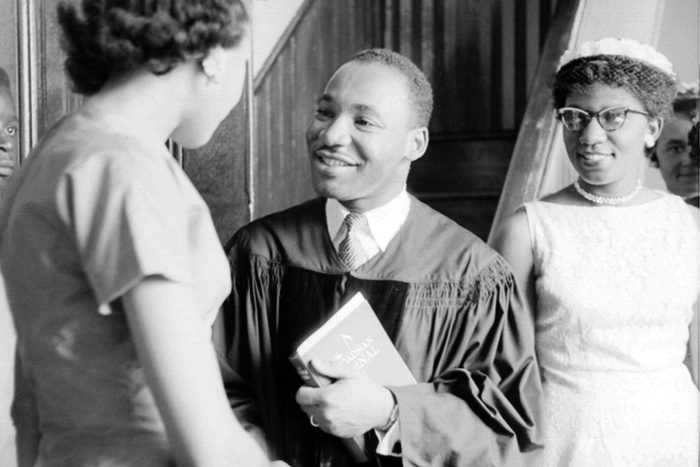
The reverend Martin Luther King Jr.
Here’s one of the pictures of Martin Luther King where we see him as a younger adult. King was an associate pastor at his father’s church in Atlanta, where he eventually became the reverend. He gave credit to his father, Martin Luther King Sr., for inspiring him to join the ministry, saying, “He set forth a noble example that I didn’t [mind] following.” In this MLK picture, he is shown speaking with parishioners in Montgomery, Alabama, after delivering a sermon on May 13, 1956.
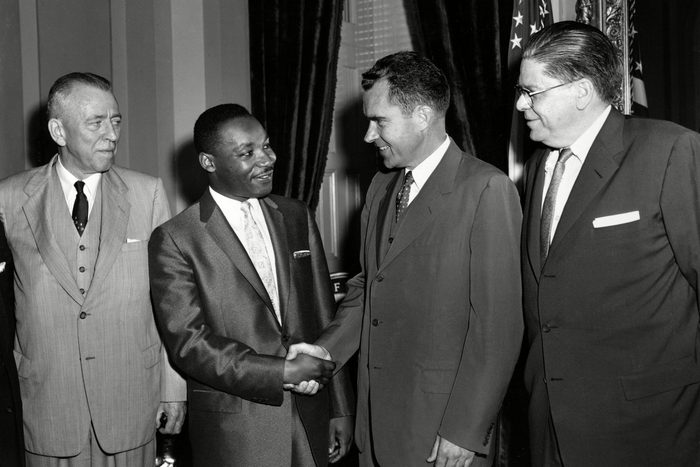
King meeting Vice President Richard Nixon
King had a complicated relationship with Richard Nixon, according to Stanford University’s King Institute. Initially, King was unimpressed with Nixon’s interest in—and commitment to—civil rights matters, but he later warmed to Nixon after two meetings in 1957, one of which is pictured here. His feelings changed again when Nixon failed to come to his defense after King was arrested for his participation in a sit-in in Atlanta in 1960.
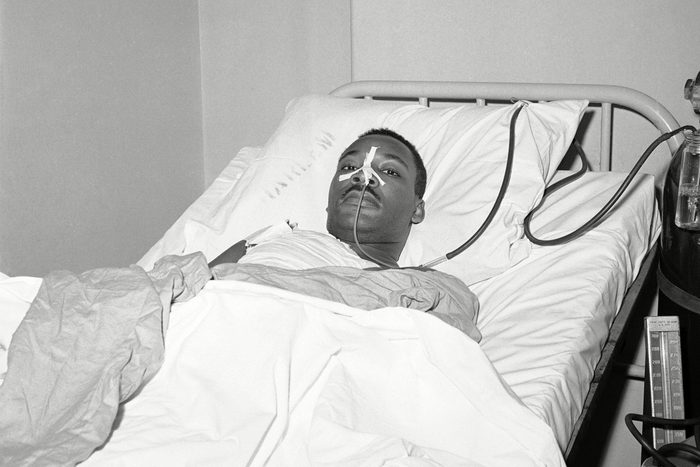
Hospitalized after surviving an assault in 1958
King was in critical condition at New York’s Harlem Hospital following an attack at a book signing in which a mentally ill woman stabbed him with a steel letter opener. King bore no ill will toward his attacker and addressed the attack in his “I’ve Been to the Mountaintop” speech on April 3, 1968, which he gave the day before he was assassinated.
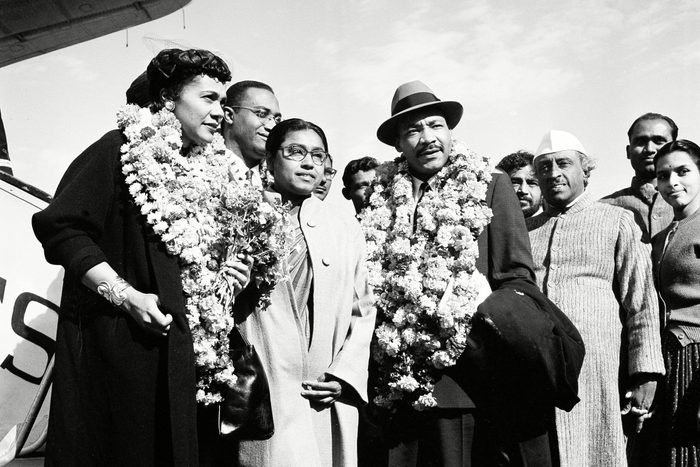
A pilgrimage to India in 1959
King, who was sometimes referred to as “America’s Gandhi,” described Mahatma Gandhi as “the guiding light of our technique of nonviolent social change,” according to Stanford University. To the group of reporters gathered at the airport, King, pictured here with his entourage, said, “To other countries, I may go as a tourist, but to India, I come as a pilgrim.”
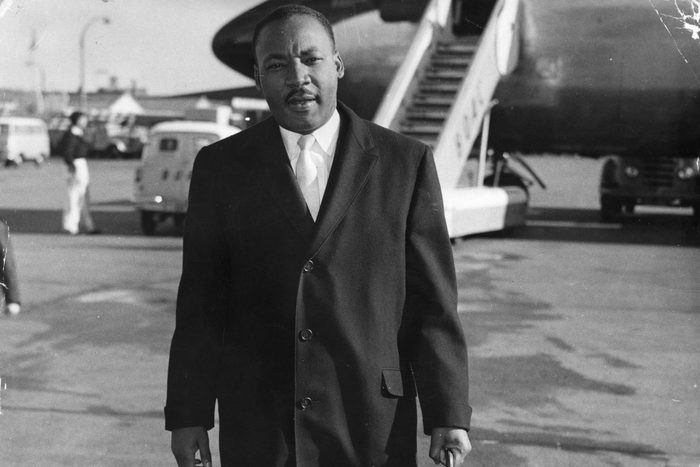
Going international
King deplaned in London to appear on the BBC show Face to Face in October 1961. During the interview, he talked about his early days and some of the most defining moments of the Civil Rights Movement as he saw it, and confided that he had times of “fear and loneliness.”
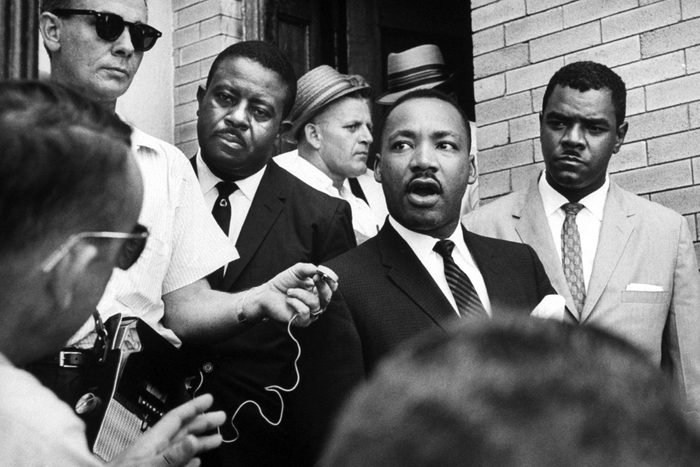
Released from jail … again
Reporters swarmed King after he was released from jail in Albany, Georgia, in 1962 following his arrest for leading anti-racism protestors without a permit. A judge ordered King and a fellow activist to pay a $178 fine or serve 45 days in jail. King chose the sentence.
“We chose to serve our time because we feel so deeply about the plight of more than 700 others who have yet to be tried. […] We have experienced the racist tactics of attempting to bankrupt the movement in the South through excessive bail and extended court fights. The time has now come when we must practice civil disobedience in a true sense or delay our freedom thrust for long years.” Two days into the sentence, at the time of this picture of Martin Luther King, authorities informed King that an unidentified man had paid his bail, ensuring his early release.
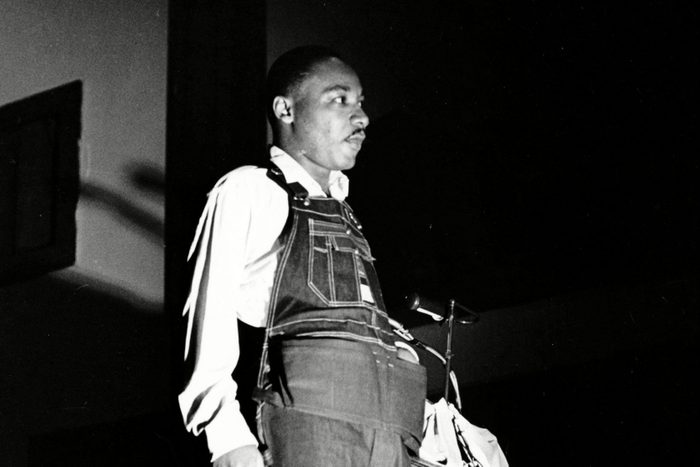
The coveralls movement
In April 1963, King helped lead an anti-segregation protest in Birmingham, Alabama—a nonviolent one, of course, and it included church kneel-ins as well as regular sit-ins and a march on the county building to register Black voters. He’s pictured here on April 6, asking supporters to join him in wearing overalls until Easter as part of the protest. The denim work clothes were once considered sharecropper wear; King wore the coveralls to symbolize how little progress had been made since Reconstruction. On April 12, King was arrested and kept in solitary confinement; his jailers refused his request to speak with his wife—she had just delivered their fourth child—until President Kennedy intervened.
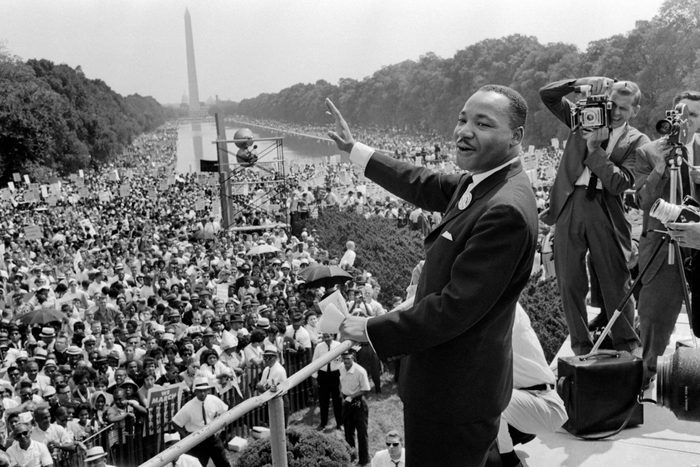
“I have a dream …”
We can’t share MLK pictures without commemorating King’s iconic speech. On Aug. 28, 1963, during the March on Washington in front of the Lincoln Memorial, King gave his famous “I Have a Dream” speech, which contained many powerful quotes about the fight against racism. He urged America to “make real the promises of democracy.” He called the day “the greatest demonstration of freedom in the history of the United States.” In one of the most historic pictures of Martin Luther King, he’s shown giving that speech before thousands of civil rights supporters.
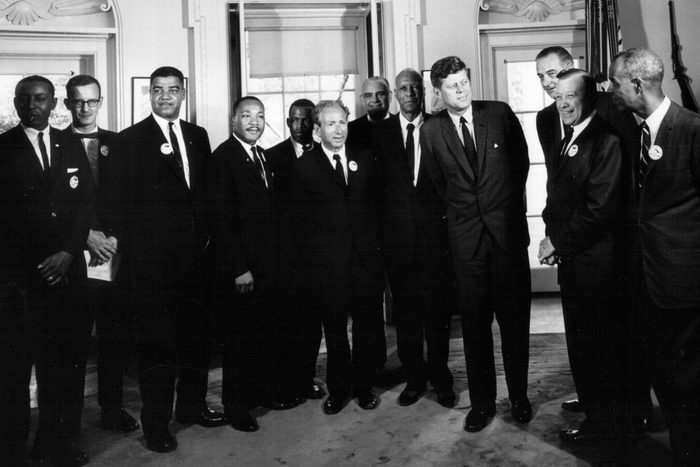
At the White House
After he delivered his “I Have a Dream” speech, King and the organizers of the March on Washington met with President John F. Kennedy and Vice President Lyndon B. Johnson at the White House. The organizers had originally wanted to meet the morning of the march, but the president demurred. According to presidential speechwriter Ted Sorensen, “He felt that if they should present him with a list of demands he could not meet, the march would then turn into an anti-Kennedy protest.”
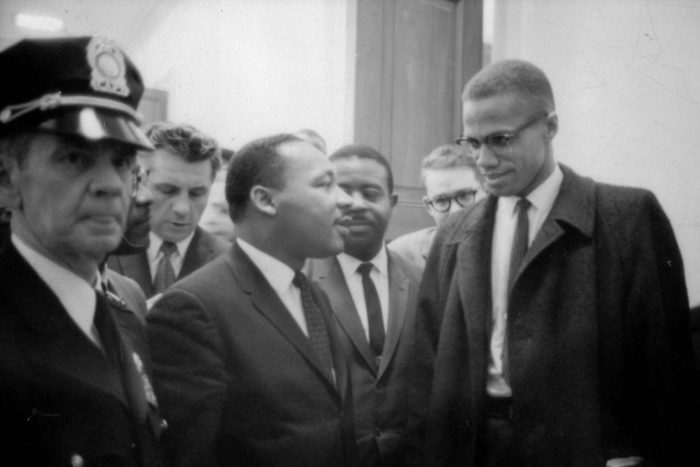
King with Malcolm X
While King protested segregation through nonviolent means, another civil rights leader, Malcolm X (formerly, Malcolm Little), advocated racial separatism through any means necessary. The two met only once in Washington, D.C., at a press conference on March 26, 1964, pictured here. At the end of the conference, King shook Malcolm X’s hand in an offer of “kindness and reconciliation.”
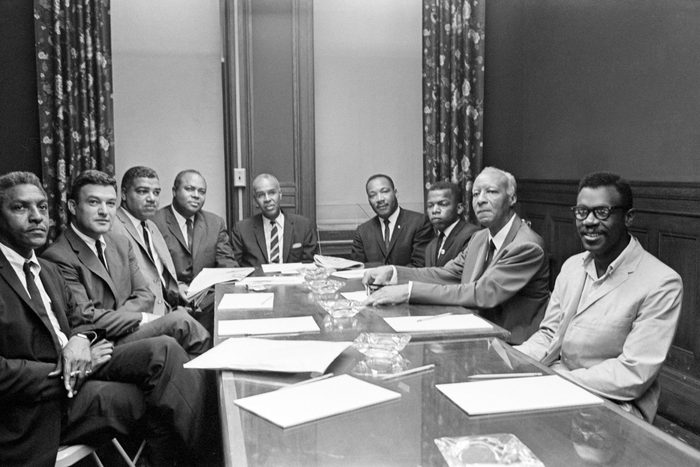
A meeting for peace
In July 1964, after an off-duty white police officer shot and killed a young Black man in New York City, a six-day race riot erupted, prompting King to fly to New York City, where he met with leaders at the NAACP’s headquarters. In a signed letter, most of the group called for peace and “a broad curtailment, if not total moratorium,” on mass demonstrations until after the November presidential election between incumbent President Lyndon B. Johnson and his Republican challenger, Barry Goldwater.
Why? They wanted to focus the public’s attention on voter registration, specifically Black voters’ registration. You may recognize that seated alongside King was fellow activist and future congressman John Lewis, who disagreed with King, saying, “Demonstrations must continue. The pressure must be kept on.”
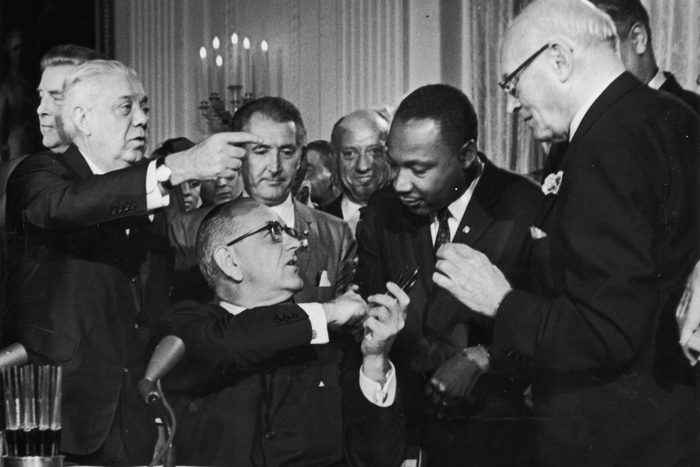
The Civil Rights Act
In one of the most noteworthy pictures of Martin Luther King, King shakes hands with President Lyndon Johnson after he signs the Civil Rights Act on July 2, 1964. It was a historic moment and act that ended segregation in public schools and deemed the discrimination on the basis of race, color, sex, religion or national origin unconstitutional.
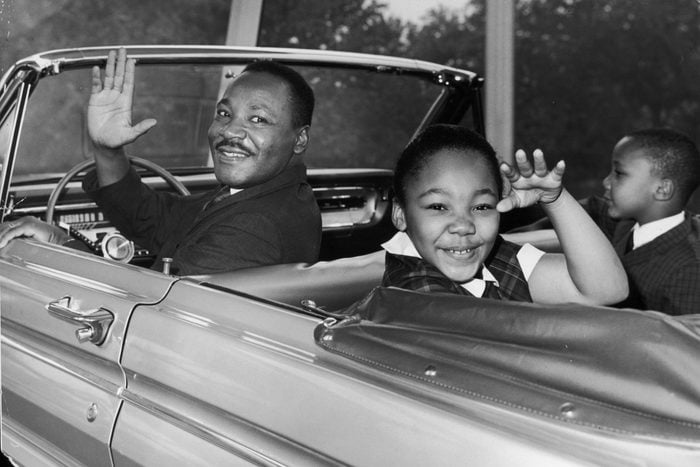
A visit to the World’s Fair
Later that summer, MLK treated his daughter Yolanda and son Martin Luther King III to a visit to the World’s Fair in New York City. Although his son Martin was only 10 years old when MLK was assassinated, he says he has countless fond memories of his father. “Yet a half-century later, the most powerful feeling I still have is gratitude, not only for the wonderful times I shared with my father, but also for having a strong mother, who inspired me with the way she raised us, kept her promise to make sure our father would be remembered and continued to serve humanity until her death in 2006.”
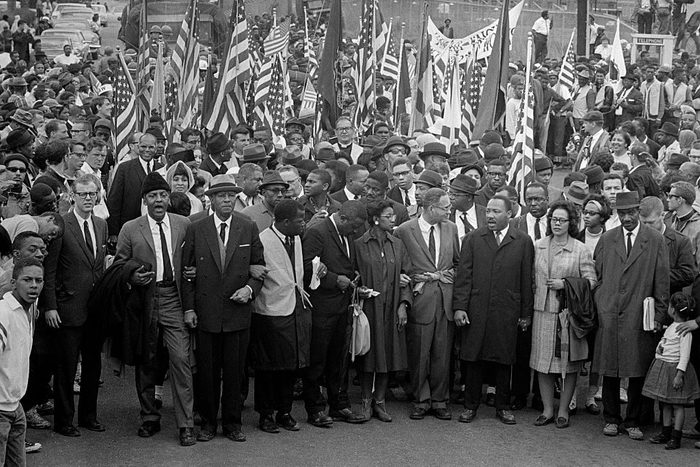
A march for voting rights
King led a five-day, 54-mile march from Selma to Montgomery, Alabama, to protest Bloody Sunday (March 7, 1965), an earlier march during which nonviolent supporters of voting rights reform were beaten and otherwise assaulted by law enforcement. The march helped prompt Congress to pass the Voting Rights Act, which gave Black people better access to the polls—at the time of the march, only 2% of the Black population in Selma were registered voters.
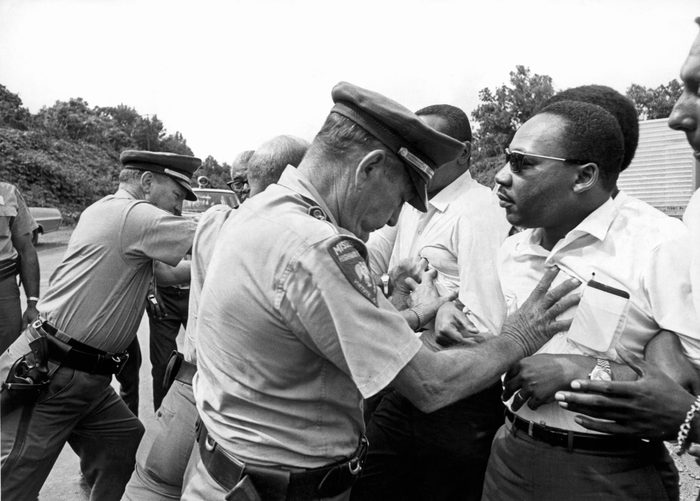
When push comes to shove
In this picture of Martin Luther King, a policeman forcefully shoves King during the 220-mile March Against Fear in Mississippi, on June 8, 1966. Martin Luther King Jr. always centered his movement on peaceful protest. “Nonviolence is a powerful and just weapon,” King said, “which cuts without wounding and ennobles the man who wields it. It is a sword that heals.”
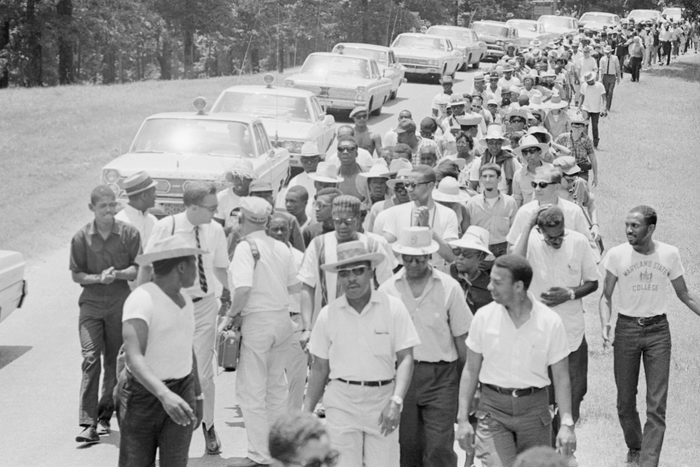
Follow the leader
In June 1966, King led Mississippi freedom marchers into Yalobusha County, Mississippi. The marchers went on to hold a voter registration drive aimed to increase the Black vote amid rampant voter intimidation and suppression tactics.
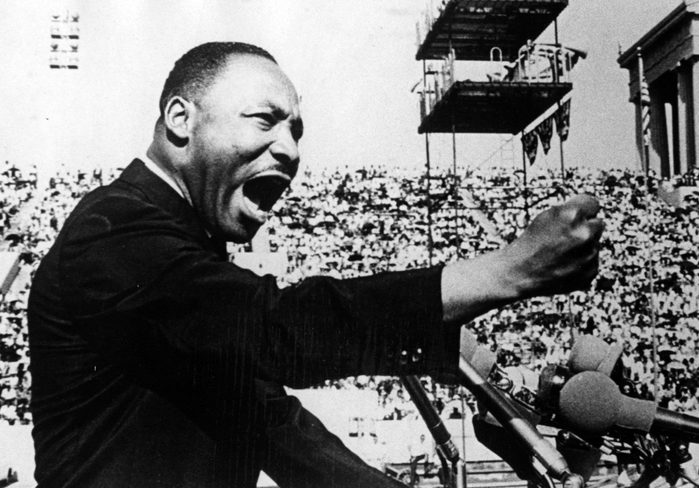
The mouth that roared
King turned up the volume for an estimated 30,000 supporters at a Chicago Freedom Movement rally in Soldier Field on July 10, 1966. The day would later be dubbed “Freedom Sunday,” an ode to the Chicago Freedom Movement, which focused on the unfair housing practices experienced by Black communities in the city. “This day we must declare our own Emancipation Proclamation,” said an impassioned King. “This day we must commit ourselves to make any sacrifice necessary to change Chicago. This day we must decide to fill up the jails of Chicago, if necessary, in order to end slums.” The great orator wasn’t always so confident with public speaking. Historians note that while King attended a seminary, he received a C for public speaking.
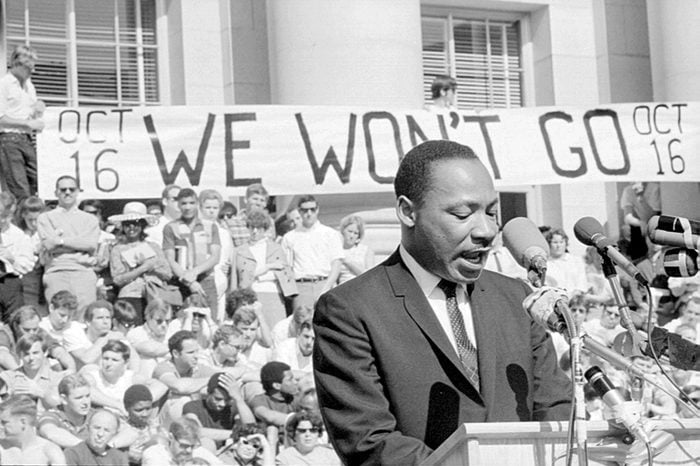
Anti-warmonger
Martin Luther King Jr. delivered a speech on the Vietnam War and his anti-war beliefs to a crowd of 7,000 people in May 1967 at the University of California, Berkeley’s Sproul Plaza in Berkeley, California.

King’s last appearance
There are many pictures of Martin Luther King that we don’t want to forget—one being his last appearance. On April 4, 1968, King was killed by a single rifle shot as he stood on the balcony of the Lorraine Hotel in Memphis, Tennessee. He’s pictured here on April 3 on that very balcony, preparing for the next day’s speech with three other civil rights leaders—Hosea Williams, Jesse Jackson and Ralph Abernathy.
Sources:
- Stanford University: The Martin Luther King Jr. Research and Education Institute
- John F. Kennedy Library and Museum: “Theodore C. Sorensen Oral History Interview – JFK #5, 5/3/1964”
- National Constitution Center: “Five interesting facts on the birthday of Martin Luther King Jr.”




















